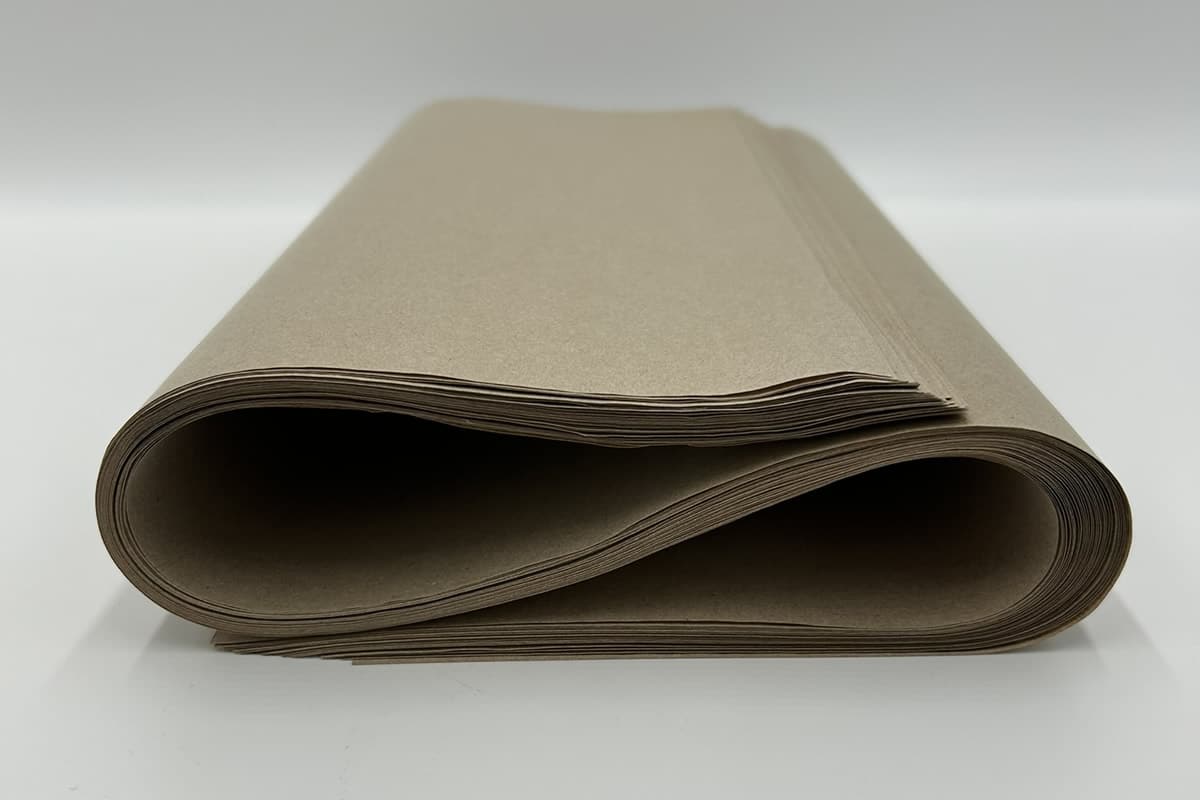How does our plastic-free non-slip paper work?

For most users, our anti-slip paper looks like normal interleaving paper at first glance, as we apply the smoothest possible anti-slip coating. This is also confirmed haptically when you hold our anti-slip paper in your hand. However, this makes it difficult to make a statement about the anti-slip effect.
Load securing: proven, powerful and flexible
With our decades of experience, we rely on a particularly smooth paper surface for good reason. Our anti-slip paper is designed as a pallet interlayer to protect smooth surfaces in particular (e.g. coated or printed cartons, trays or big bags with a very smooth outer structure) against shifting loads, for example when stretch film reaches its limits or when transportation is to be carried out without additional load securing equipment. In this case, we also rely on a particularly even and smooth anti-slip coating, as experience has shown that this is the best way to achieve the best sliding friction values over the entire surface on slippery surfaces. Figuratively, you can imagine the surface of our anti-slip paper as if tiny gripping arms were gripping the small irregularities of a smooth surface. If, on the other hand, we had a rough or uneven surface, it would only grip if the products to be protected against movement have the same structure and thus wedge against each other. Accordingly, such an anti-slip coating would not really be universally applicable. As a rough surface already has certain coefficients of sliding friction per se and our coating also has a sliding friction effect at the various contact points on these surfaces, the challenge for our development team was much more to develop a generally functional special anti-slip paper.
Best quality and maximum anti-slip effect
As smooth use in a wide variety of (automated) packaging lines is very important to us, we attach great importance to the quality of the raw materials we use and the coating process. For example, we use a high-quality smooth or dense base paper (Testliner 1), for which we test every batch in the laboratory to ensure that it meets defined values and carry out an elaborate UV drying process after coating. This process ensures that as much anti-slip coating as possible remains on the surface and does not penetrate into the paper fibers, where the coating would have no added value.
In terms of the coating process, we stand out from our competitors because our mineral coating is plastic-free and perfectly suited to the waste paper cycle, making it particularly sustainable. We use very high-quality UV drying to ensure that the quality of our anti-slip interlayers is absolutely uniform and that our industrial customers can use robots smoothly via vacuum lifting spouts.
Since we are talking specifically about a load-securing agent for anti-slip paper, a certain degree of robustness, for example with regard to water-repellent properties, is also relevant in addition to very good sliding friction values. Most of our competitors use a plastic coating for this purpose, which achieves the desired effect but can cause problems in the waste paper cycle. If, for example, the waste separation systems detect that the paper has a plastic coating, it is assigned to residual waste in case of doubt and can only be used thermally. It is then no longer possible to manufacture a new paper product from it and the paper it contains is "lost". For this reason, we do not use plastic in the coating, as this gives our anti-slip paper effective added value in the recycling cycle.
100% reusable and recyclable
During development, the focus was naturally on particularly good load securing and coefficients of sliding friction, as well as smooth use in automated packing lines. In addition, we always want to live up to our own "green" approach.
